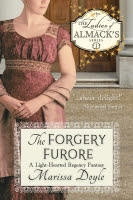 I love parks—the greenspace, the sound of children playing, birds singing. It always seems like I can breathe a little easier out among the flowers and trees.
I love parks—the greenspace, the sound of children playing, birds singing. It always seems like I can breathe a little easier out among the flowers and trees.I’m not sure that was the Prince Regent’s reason for deciding to create another park in London. I’m not even certain it was Prinny’s idea, though many sources mention “the Crown” as the instigator. Whatever the genesis, 487 acres of land in what was then northern London belonged to the king and was being leased as farmland, and in the early 1800s, the Commissioner of Woods requested proposals from architects as to how it could be better used.
The proposal of John Nash, often called Prinny’s architect, won the competition. He envisioned a round park, with an Inner Circle and Outer Circle, both ringed by elegant homes. In the center would be a new summer palace for the Prince, with a grand avenue leading from it down St. James’s Palace. The Regent’s Park would include an ornamental lake and a canal as well.
Work started in 1811. Nash first excavated the lake, which was fairly deep and intended to allow boating. After an accident in 1867, in which dozens of people died by drowning after falling through the ice on top, the lake was filled in to a 4-foot uniform depth. Nash also believed in ground contouring and planting early, before construction.
Next came the villas of the Inner Circle and the townhouse terraces of the Outer Circle. The architecture is generally credited to John Nash but at least some evidence suggests that Decimus Burton, then getting started on his career, was involved, with financial support from Burton’s father, James Burton, a wealthy real estate developer. The Holme in the Inner Circle was James Burton’s home.
It was also one of the few to be constructed. Prinny ultimately decided against having his summer palace built in the park. Of the 56 villas planned, only 8 were ever built. The grand avenue to St. James’s Palace, completed in 1819, became today’s Regent Street. The Regent’s Canal that was to run through the park was moved to its northern edge and became the Grand Union Canal.
Instead of Prinny’s set, wealthy merchants and professionals leased the townhouses of the Outer Circle. At first, they and those who lived in the mansions on the inner circle were the only ones allowed to use the park, although it may have been open once a week for carriage rides. In 1828, the recently formed Royal Zoological Society leased some of the land and started the London Zoo. In 1832, the Toxophilite Society built a hall and grounds for archery. In 1838, the Royal Botanic Society moved in and continued to populate the landscape.
It wasn’t until 1835 that the park opened to the public, and then only two days a week, with access to the east side. Today, Regent’s Park welcomes visitors from all over the world and is a much beloved London park.
All that lovely green.







No comments:
Post a Comment